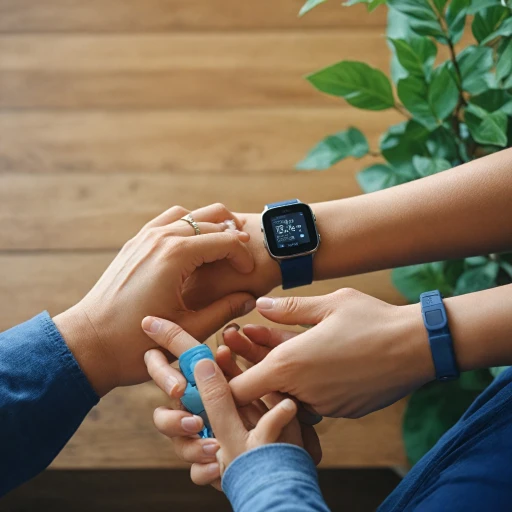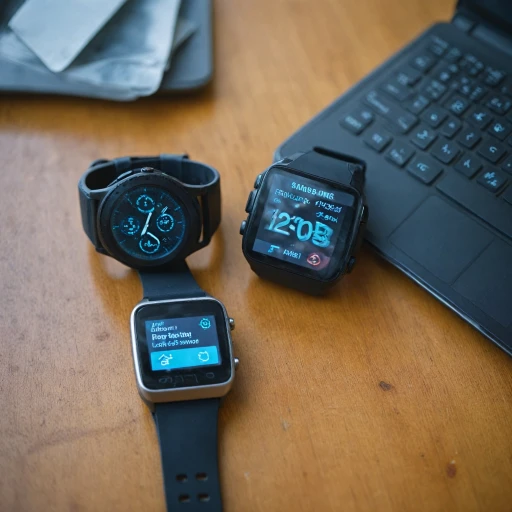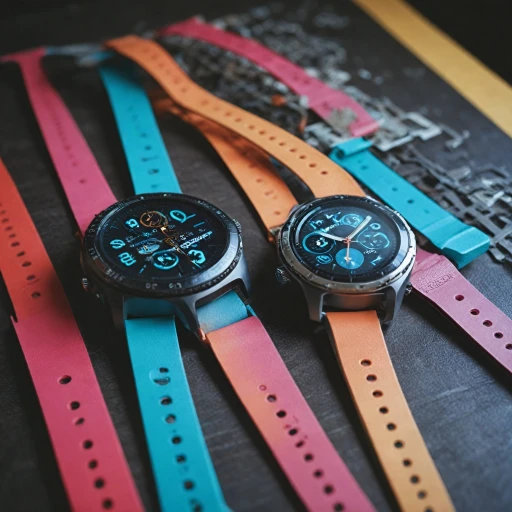Understanding Fitbit Syncing
{ "result": "How Fitbit Devices Sync Data with Your Smartphone
\nFitbit syncing is an essential function that allows your Fitbit device to communicate with the Fitbit app on your smartphone or tablet. When properly connected, it ensures that the activity data from the Fitbit device is accurately updated and recorded in the app. Understanding the syncing process is crucial for troubleshooting any sync issues and ensuring your data remains current.
\nFitbit syncing primarily operates through a Bluetooth connection, which is the method used by your fitbit device to transmit data to your phone or tablet. It's important to note that both your Fitbit device and smartphone must have Bluetooth enabled and be connected to ensure smooth syncing. You can check your phone settings to confirm Bluetooth is active.
\nFor successful syncing, make sure your device is within range. Keep the Fitbit close to the smartphone during the syncing process as interference can affect the connection. Also, regular updates to both the Fitbit app and the Fitbit device can impact syncing. Check for and install any available updates via the app settings for better performance.
\nWhen using different types of devices like Androids, or iPhones, you might notice variations in how these processes unfold, including the location of the sync options within the Fitbit app. In instances where your Fitbit won’t sync, it might be helpful to open the Fitbit app, navigate to the Today tab, and initiate a manual sync by tapping the sync icon.
\nFinally, always ensure your Fitbit account is correctly set up and logged in on the device you're attempting to sync with. Any discrepancies in account credentials can disrupt the data flow and lead to syncing issues. If you're having persistent problems with syncing, further investigation into why your Fitbit might not be syncing could provide valuable insights."\n}
Common Reasons for Sync Failures
Typical Causes behind Sync Failures
Understanding why your Fitbit won’t sync properly can help in swiftly resolving the issue. Here are some common reasons that might hinder the Fitbit device from syncing correctly with your smartphone, whether it’s an iPhone or an Android phone.- Bluetooth Connectivity Issues: Ensure that Bluetooth is enabled on your phone. The most typical reason for a Fitbit not syncing is a lack of connection via Bluetooth.
- Outdated Fitbit App: If your Fitbit app isn’t updated, the syncing process might be interrupted. Keeping your app updated ensures compatibility with the latest device firmware and features.
- Multiple Fitbit Devices: If you have more than one Fitbit device connected to your Fitbit account, this might lead to conflicts during the syncing process. Make sure the correct device is selected in the app.
- Fitbit App Settings: The settings app on your smartphone could have incorrect configurations, affecting the syncing process. It’s crucial to check those and ensure everything is correctly set up.
- Phone Tablet Compatibility: Compatibility issues between your Fitbit device and your phone or tablet’s operating system can cause syncing failures. Both Fitbit devices and their companion apps must be compatible with your phone’s OS version.
- Battery Life: A Fitbit device running low on battery might not sync to conserve power. Ensuring your device has ample charge can prevent such issues.
- Time Settings: Incorrect time settings on your phone or Fitbit device may result in syncing difficulties, as data could become mismatched.
Quick Fixes for Sync Problems
Quick Solutions for Fitbit Syncing Woes
Sometimes, getting your Fitbit to sync efficiently can be as simple as tweaking a few settings or checking specific features on your app and device. Here’s a step-by-step guide to resolve common syncing problems:
- Check Bluetooth Connectivity: Ensure your phone or tablet has Bluetooth enabled. Open the settings app on your smartphone, whether it’s Android or iPhone, and verify that Bluetooth is turned on. Without this, your Fitbit device won't sync data properly.
- Keep the Fitbit App Updated: An outdated app can cause syncing issues. Make sure Fitbit app is updated to the latest version. Visit your phone’s app store and you'll find the option to update the Fitbit app easily if an update is available.
- Restart Your Fitbit: If your Fitbit won’t sync, a simple restart can fix many problems. Press and hold the button on your Fitbit device until you see the Fitbit logo; this resets your device without affecting your data.
- Verify Device Compatibility: Double-check that your device is compatible with the Fitbit app. Although many smartphone models support Fitbit, there are exceptions. Look up the specifications if your data doesn’t sync.
- Sync at the Right Time: Open Fitbit app often during the day, especially when the device doesn’t sync as expected. More consistent syncing helps keep activity data current and analyzes trends seamlessly.
- Log into the Correct Fitbit Account: Make sure you’re logged into the same Fitbit account on both your device and through the app. A discrepancy here means Fitbit won’t sync accurately.
These steps address the most straightforward fixes for when devices encounter syncing interruptions. For more insight into maximizing your fitness tracking setup, consider exploring how to choose the perfect wristwatch for step tracking. Incorporating these simple checks into your routine can prevent and resolve many syncing disruptions.
Advanced Troubleshooting Tips
Deep Dive into Advanced Solutions
- Manual Sync: To ensure that your Fitbit device updates promptly, sometimes you need to manually initiate a sync. Open the Fitbit app on your smartphone and tap on the profile picture icon, then select your device. Follow this by tapping on the 'Sync Now' option. This action should ideally ensure data transfer to the app.
- Bluetooth and Hardware Troubleshooting: The Bluetooth connection is crucial for syncing. Make sure Bluetooth is turned on and functioning properly on your phone or tablet. If your Fitbit won’t sync, toggling Bluetooth off and on can reset the connection. Additionally, try restarting your phone, as this can help resolve any lingering connectivity issues.
- Wi-Fi Interference: Sometimes, excessive Wi-Fi traffic or interference can hinder syncing. Attempt to connect your Fitbit device while in closer proximity to your phone. Consider switching off Wi-Fi temporarily or moving closer to your router.
- Firmware and App Updates: Outdated software can cause syncing issues. Ensure both your Fitbit device and app are up to date. Open the settings on your smartphone to see if a system update is available. For Fitbit app updates, check the app store on your device. Similarly, update Fitbit via its settings.
- Device Notifications and Background App Refresh: On iPhone or Android devices, ensure background app refresh and notification settings are correctly configured. This allows the Fitbit app to update in the background, even when not actively running.
- Sync Across Multiple Devices: If you use multiple smartphones or tablets, ensure that you’re signed into the same Fitbit account across all devices, as discrepancies can cause syncing problems.
- Device Reset: As a last resort for persistent syncing problems, consider resetting your Fitbit device. Hold down the button (or buttons, depending on the model) for 10-15 seconds until you see the Fitbit logo. After restarting, try to sync again.
By taking these proactive steps, you would enhance your chances of resolving Fitbit syncing issues effectively, ensuring reliable operation of your wearable device.
When to Seek Professional Help
Recognizing When to Call in the Pros
If you've diligently followed the troubleshooting steps and still experience issues with your Fitbit syncing, it might be time to seek professional help. Sometimes, the problems can stem from more complex matters that require expert intervention.- Persistent Sync Failures: If your Fitbit device won’t sync despite ensuring Bluetooth connectivity and checking your smartphone settings, consider reaching out to Fitbit support. They can provide more tailored solutions depending on the specific problem you're encountering.
- Hardware Malfunctions: There might be cases where your Fitbit device or the paired phone is experiencing hardware issues. If your device isn’t recognized by the smartphone or it constantly disconnects, a hardware inspection might be necessary.
- Software Bugs: Occasionally, Fitbit sync issues can arise from bugs in the app or the device's firmware. While updates typically fix these, sometimes a reset Fitbit procedure guided by professionals may be necessary. They might recommend reinstalling the Fitbit app on your phone or resetting your device.
- Advanced Troubleshooting: For users comfortable with tech, diving into more advanced settings can be an option. This can include modifying network settings, reviewing Bluetooth permissions, and ensuring your phone or tablet's software is up to date. However, if these steps sound overwhelming, professional assistance is advisable.
Preventing Future Sync Issues
Preventive Measures to Ensure Smooth Fitbit Syncing
Maintaining a seamless connection between your Fitbit device and app requires a proactive approach. By anticipating and addressing potential pitfalls, users can often prevent syncing problems before they become a reality. Consider these strategies to help guard against future sync issues:- Regular Software Updates: Ensure that your Fitbit device and app are updated consistently. Regular updates can prevent compatibility issues and improve the performance of your syncing processes.
- Reliable Bluetooth Connection: Always verify that Bluetooth is enabled on your phone or tablet when attempting to sync. To reduce the risk of disconnection, keep your Fitbit close to your device.
- Solid Internet Connectivity: Syncing may require a stable internet connection, especially for larger data transfers. Always check your Wi-Fi or cellular connection status as you strive for seamless syncing.
- App Permissions: Make sure that the Fitbit app is granted the necessary permissions in your device's settings app, allowing it access to Bluetooth and other required services.
- Manage Paired Devices: Avoid an overload of paired Bluetooth devices. Removing any devices that are no longer in use can prevent interference with your Fitbit connection.
- Check Battery Levels: Both your smartphone and Fitbit device should have sufficient battery levels to support a successful sync process.
- Clear Cache Regularly: For Android users, clearing the cache of your Fitbit app can resolve minor syncing glitches and refresh the connection with the Fitbit server.



